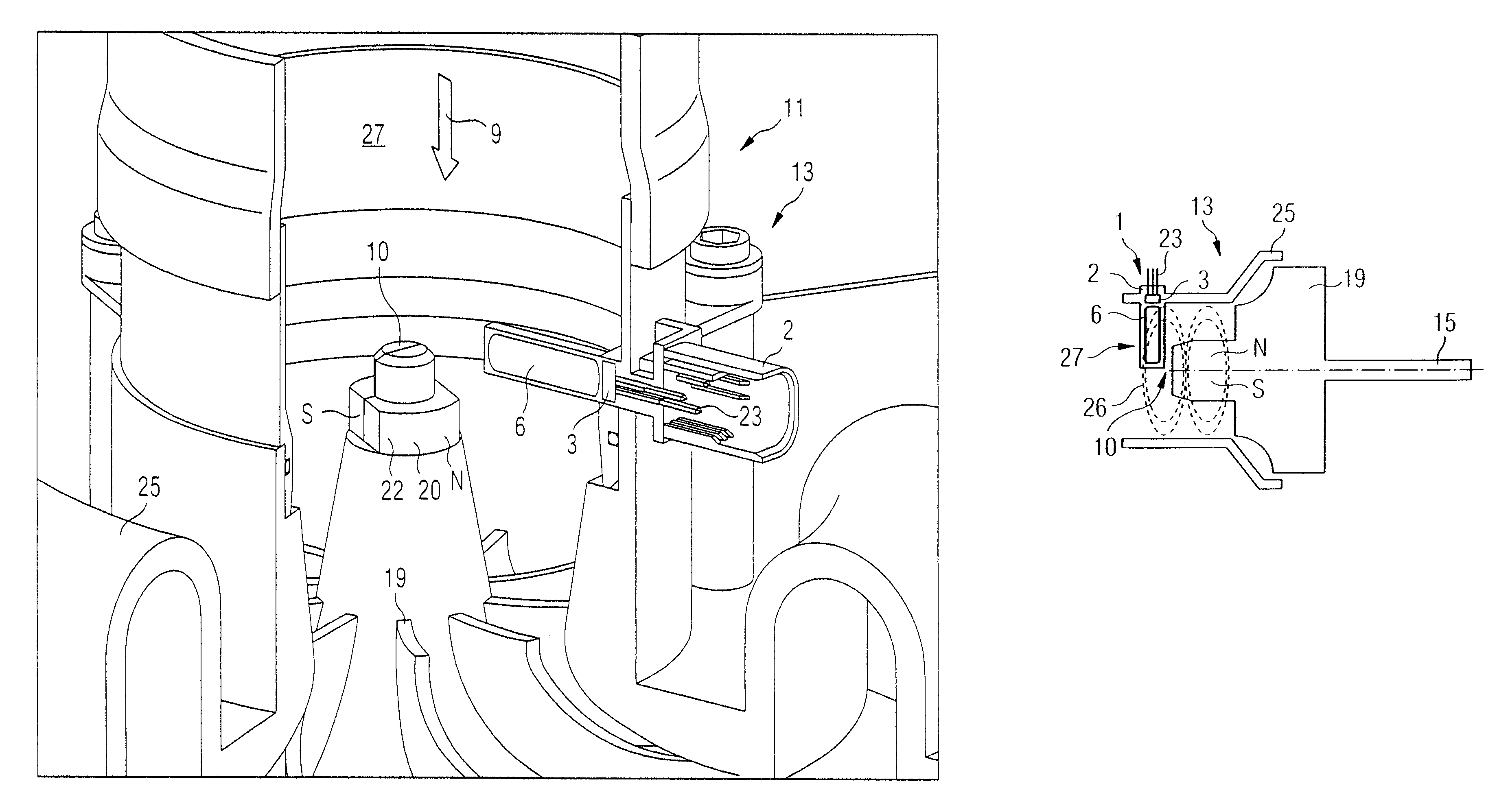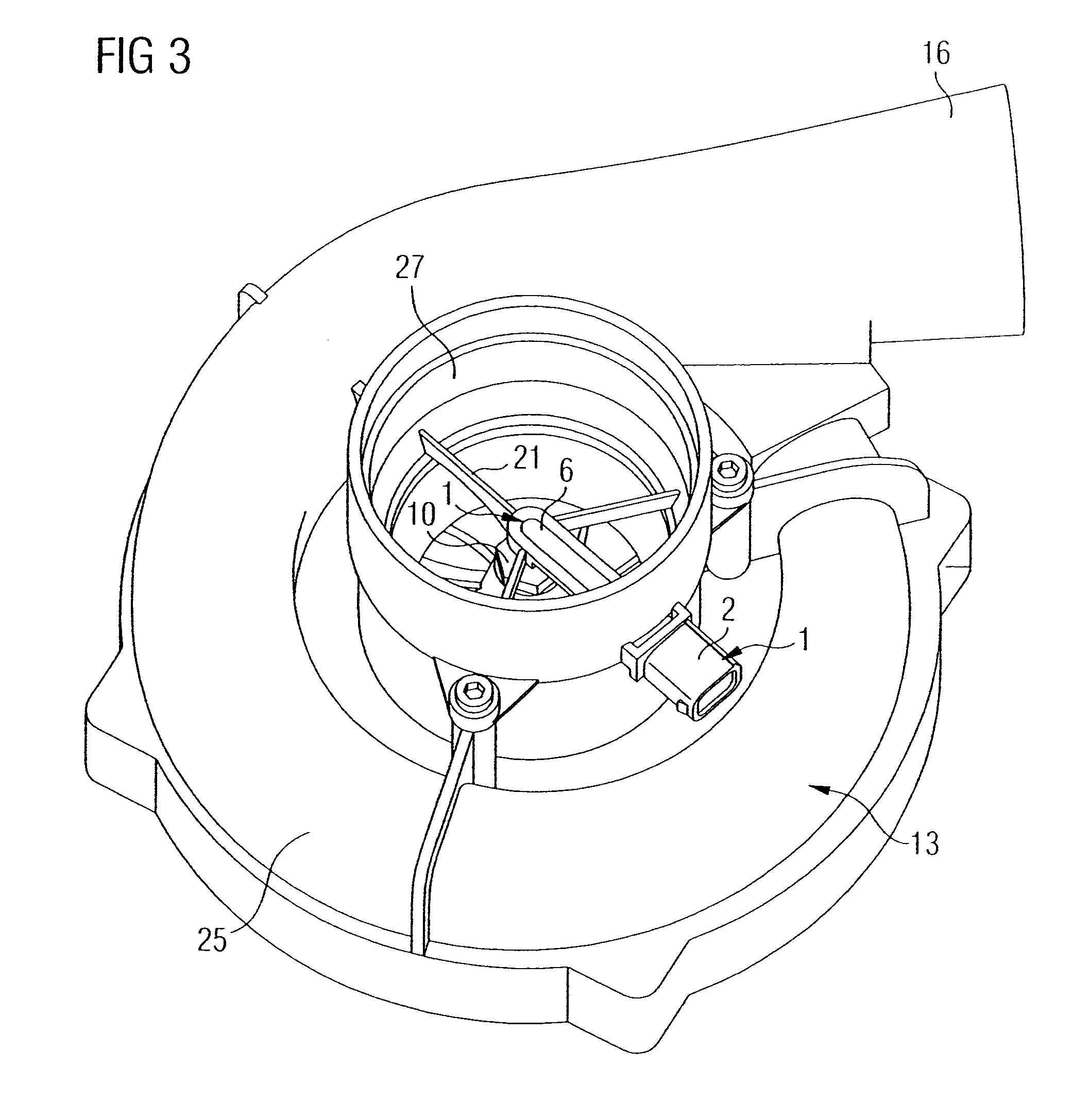Magnetic field sensor for measuring the rotational speed of a turboshaft
a technology of magnetic field and turbocharger, which is applied in the direction of instruments, galvano-magnetic hall-effect devices, machines/engines, etc., can solve the problems of increasing the rotational speed, increasing the weight of the engine, and increasing the cost of the engine, so as to achieve the effect of simple production
- Summary
- Abstract
- Description
- Claims
- Application Information
AI Technical Summary
Benefits of technology
Problems solved by technology
Method used
Image
Examples
Embodiment Construction
[0038]FIG. 1 shows a conventional exhaust gas turbocharger 11 with a turbine 12 and a compressor 13. A compressor wheel 19 is rotatably mounted in the compressor 13 and is connected to one end of a turboshaft 15. Another end of the rotatably mounted turboshaft 15 is connected to a turbine wheel 14. Hot exhaust gas from an internal combustion engine (not represented here) is admitted into the turbine 12 via a turbine inlet 17 which sets the turbine wheel 14 in rotation. The exhaust gas stream leaves the turbine 12 through a turbine outlet 18. The turbine wheel 14 is connected to the compressor wheel 19 by the turboshaft 15. Consequently, the turbine 12 drives the compressor 13. Air is sucked into the compressor 3 through an air inlet 27, and is then compressed in the compressor 13 and supplied to the internal combustion engine via the air outlet 16.
[0039]FIG. 2 shows the turboshaft 15 and the compressor wheel 19. The compressor wheel 19 is produced for example from an aluminum alloy ...
PUM
 Login to View More
Login to View More Abstract
Description
Claims
Application Information
 Login to View More
Login to View More - R&D
- Intellectual Property
- Life Sciences
- Materials
- Tech Scout
- Unparalleled Data Quality
- Higher Quality Content
- 60% Fewer Hallucinations
Browse by: Latest US Patents, China's latest patents, Technical Efficacy Thesaurus, Application Domain, Technology Topic, Popular Technical Reports.
© 2025 PatSnap. All rights reserved.Legal|Privacy policy|Modern Slavery Act Transparency Statement|Sitemap|About US| Contact US: help@patsnap.com



